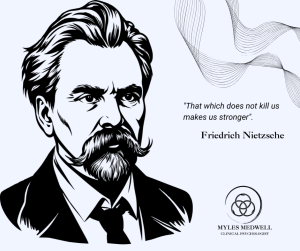Psychoanalysis and Psychodynamic Therapy in Melbourne
Many people turn to psychoanalysis and psychodynamic therapy for mental health support. These therapies help people understand thoughts and feelings that may be hidden or hard to explain. This article aims to explore the essence of psychoanalysis, the distinctions between psychoanalytic and psychodynamic therapy, and how individuals in Melbourne can navigate their therapeutic journeys effectively.
How Psychoanalysis Helps You Understand Yourself
Psychoanalysis is a unique and in-depth approach to understanding ourselves. It’s both a type of therapy and a way of thinking about how our minds work. At its core, psychoanalysis explores how our early life experiences, hidden thoughts, and unresolved emotions can quietly shape the way we think, feel, and act today.
This method was first introduced by Sigmund Freud, a neurologist from Austria, in the early 1900s. Even though the field has evolved a lot since then, the heart of psychoanalysis remains the same: helping people become aware of what’s going on beneath the surface, in the unconscious mind.
Freud described the unconscious as a hidden part of our mental life where old memories, desires, and emotions are stored. These may not be immediately obvious to us, but they can have a strong impact on our moods, behavior, and relationships. Psychoanalysis helps bring these inner forces into the light so we can understand and work through them.
More Than Symptom Relief: Exploring the Depths of the Mind
In Melbourne, psychoanalysts guide people through therapy in a private and respectful setting. They listen closely and provide insight. Their role is to help people connect past experiences to current emotional patterns. Some therapies focus mainly on easing symptoms quickly, but psychoanalysis goes further. It explores the underlying emotional and psychological patterns that might be influencing your current thoughts, feelings, and behaviours.
One of the main tools used in psychoanalysis is something called “free association.” This just means talking freely about whatever comes to mind, without editing yourself. It might sound simple, but it often leads to surprising discoveries. As you talk through your thoughts, you might notice a connection between how you’re feeling now and something that happened earlier in life. Recognising that link can be a meaningful step toward understanding yourself more deeply.
Sessions often take place several times a week, and in traditional settings, the person lies on a couch while the therapist sits out of sight. This setup helps people speak more openly without feeling watched. That said, modern psychoanalysts often adjust the setup based on what feels most comfortable for each person. For example, some people may find it easier to open up while sitting in a chair and having a face-to-face conversation, while others might prefer the more introspective feel of lying down, similar to traditional settings.

Contemporary Approaches to an Enduring Practice
These days, many therapists take a more flexible approach to psychoanalysis. Instead of the traditional setup, you might have weekly sessions where you sit and talk face-to-face with your therapist. This modern version, often called psychodynamic therapy, still focuses on deep emotional exploration but fits better into everyday life and schedules.
A big part of this type of therapy is looking at how your early relationships — especially with caregivers or parents — continue to shape how you connect with others now. For instance, if you grew up feeling unappreciated or constantly judged, those feelings might still echo in your adult relationships, even if you’re not fully aware of it.
Another idea that’s really important in this kind of therapy is called transference. It’s when you start to feel or act toward your therapist the way you felt or acted with someone important from your past. This can feel a bit strange at first, but it actually gives you a powerful opportunity to understand those old patterns and begin to heal them.
Therapists, on their end, can also feel strong reactions during sessions — that’s known as countertransference. When handled thoughtfully, it can help the therapist understand your experience more deeply and respond in a way that supports your growth.
Psychoanalysis vs Psychodynamic Therapy: What’s the Difference?
It’s easy to get confused between psychoanalysis and psychodynamic therapy since they share many ideas — and that’s because psychodynamic therapy actually grew out of traditional psychoanalysis. But there are some key differences between the two.
Psychoanalysis is the more intensive of the two. It usually involves multiple sessions per week, often for several years, with a focus on exploring the unconscious mind in great depth. This approach often includes techniques like free association, dream analysis, and working through long-standing emotional conflicts. The classic image of someone lying on a couch while the therapist listens quietly is rooted in this traditional model.
Psychodynamic therapy, on the other hand, is more flexible and modern. It’s based on the same core principles — like the importance of early relationships, unconscious patterns, and emotional insight — but it’s typically conducted in once-a-week sessions. The therapist and client usually sit facing each other, and the focus is more on helping the person function better in everyday life while still addressing deeper emotional themes.
Key Differences
| Psychoanalysis | Psychodynamic Therapy |
|---|---|
| Multiple sessions/week | 1 session/week |
| Long-term (years) | Short to medium-term |
| Unstructured | More structured |
Think of it this way: psychoanalysis is a deep dive, while psychodynamic therapy is more like snorkeling — still below the surface, but not quite as intense. Both can be incredibly helpful, and the best choice depends on your goals, lifestyle, and comfort with the process.
Whether you choose psychoanalysis or psychodynamic therapy, both offer meaningful ways to better understand yourself and grow emotionally. It’s not about choosing the “right” method — it’s about choosing the one that fits your life, your needs, and your readiness to explore what’s beneath the surface.
Do They Really Work? The Long-Term Benefits of Going Deeper
One of the biggest questions people have when considering therapy is: “Will it actually help me?” The short answer is yes — especially when it comes to therapies that look beneath the surface, like psychoanalysis and psychodynamic therapy.
Unlike approaches that aim for fast symptom relief, these therapies work by helping you understand the root causes of your struggles. This means the results often go deeper and last longer. When you gain insight into long-standing patterns — like why you keep ending up in the same types of relationships or feeling stuck in certain emotional cycles — you’re not just managing symptoms; you’re changing the way you understand and respond to your inner world.
Research supports this, too. Studies have shown that people who go through psychoanalytic or psychodynamic therapy often continue to improve even after therapy ends. That’s because the process gives you tools and insights you carry with you for life. It’s a bit like learning how to read your own emotional map — once you’ve learned it, you can keep navigating better, even without a guide.
These therapies also help strengthen your sense of self, increase emotional resilience, and improve how you relate to others. Over time, many people find that they experience more satisfaction in relationships, greater confidence in handling life’s challenges, and a deeper understanding of who they are.
In short, while psychoanalysis and psychodynamic therapy may take time, the investment often pays off in ways that are meaningful and lasting — not just feeling better, but actually living better.
Ready to Begin Your Journey?
If you’re curious about understanding yourself more deeply or working through long-standing emotional patterns, our clinic offers a safe and supportive space to begin. Whether you’re interested in traditional psychoanalysis or modern psychodynamic therapy, our experienced clinical psychologist can help guide you at your own pace.
Reach out today — we’re here to walk alongside you as you explore what’s beneath the surface.
📩 Email Myles to book a session




